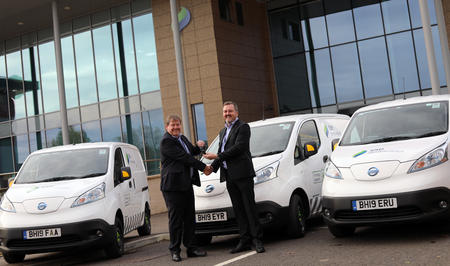Governments at the national, regional and city levels are finding that zero emission vehicles (ZEVs) can support them in a green recovery from the COVID-19 crisis.
The global pandemic has raised many questions about the future of mobility. The resilience shown by the zero emission vehicle market indicates that ZEVs are fast becoming a competitive alternative to conventional internal combustion engine (ICE) vehicles.
Despite ongoing debates over what a green recovery will look like across geographies, due to varying levels of resilience and resource, there is one thing governments can agree on. The future of mobility is low carbon. And research shows that zero emission vehicles can support governments to achieve a green recovery.
Through the ZEV Community, governments and businesses have shared how ZEVs are a part of the COVID-19 recovery in their jurisdiction.
ZEVs can be part of the COVID-19 recovery
The City of New York (NYC) incorporated EVs into the response fleets providing essential services to vulnerable citizens during the pandemic. The financial benefits of these vehicles encourage city leadership to continue efforts to improve the design, planning and deployment of EV charging infrastructure to expand the network.
Clean transport is essential to achieve the city’s goal of carbon neutrality by 2050 and Jen Roberton from the New York City Mayor’s Office of Sustainability shared how EVs also form a key part of NYC’s economic recovery:
“We currently have over 2100 EVs in our fleet electric vehicles. We're hoping to expand that to 4000 by 2025. This is a goal that we've committed to. And a really big selling point for us right now is the lower overall total cost of ownership of an EV compared to an ICE vehicle… this is a huge benefit as we face a fiscal crisis. These vehicles are both cheaper and more sustainable.”
NYC also relaunched its Clean Trucks Program which provides funding to incentivise the transition from diesel trucks to electric models.

Progressive policies can attract investment and increase ZEV adoption
California is leading the way on ZEV uptake in the US and has set ambitious 100% ZEV sales targets for passenger cars and trucks by 2035. Despite the impacts of COVID-19, investment in EV charging infrastructure in the state, including hydrogen stations, was still increasing in the first five months of 2020. Electric vehicles are also one of California's top exports.
We know that government funds alone are not enough to achieve a green recovery and that investment from the private sector is essential. When questioned on how California is able to attract so much private investment, Tyson Eckerle from the California Governor's Office of Business and Economic Development (GO-Biz) explained:
“When we talk to businesses who look at California, they make the investments in California because of that strong policy environment. And, you know, the great thing is that it can be replicated. And that's what we hope, all states and countries can either replicate or build on and improve upon what we've done.”
ZEV commitments and long-term actions, such as setting fuel economy standards, send clear signals to the auto industry and private sector that decarbonising transport is a priority. As governments worldwide follow the lead and set clear targets to phase out fossil fuels, the uncertainty in the market is reduced and more businesses will support the transition.
Alistair McGirr, Head of Strategic Policy at SSE, a multinational energy company, explains:
“We think that policymakers can unlock a significant amount of private investment into low carbon infrastructure. Governments should be looking at the policies they can bring forward to secure supply chain investments in an emerging EV industry.”

With equity at the core, a green recovery can benefit all
In NYC, the increased demand for vehicles to provide essential services such as medical assistance and food delivery during the pandemic highlighted the need to address underlying racial and social inequalities.
“The essential workers that have kept New York City running are predominantly people of colour… so we’re looking at this in terms of racial justice and need to unlock sustainable transportation actions to improve our air quality.” - Jen Roberton, New York City Mayor’s Office of Sustainability
Addressing unemployment is also a big priority, particularly in disadvantaged communities that have been most affected by COVID-19. ZEVs can provide many green job opportunities and governments such as California are basing their market development framework on the principle of equity.
“Really, everything that we do is focused on increasing access and equity… How do we actually make that transition into the markets that need reliable transportation the most?... It's about getting benefits to the communities most in need.” - Tyson Eckerle, California Governor's Office of Business and Economic Development (GO-Biz)
ZEV progress is part of the wider sustainable mobility context
As well as prioritising zero emission vehicles, NYC also promoted walking and cycling during the pandemic with their Open Streets Program and expanded its bus lanes. Other ZEV priorities include supporting electric for-hire vehicle adoption, e-bikes, e-scooters and ride-sharing programs.
Zero emission vehicles are a crucial element of a green economic recovery. They also contribute to the greenhouse gas emissions reduction necessary to combat climate change and reduce harmful pollution levels that’re affecting people’s health. Nevertheless, it is important to keep in mind a holistic vision of a sustainable, low carbon transport system with less private car ownership, more cycling, walking, and prioritisation of public transport and ride-sharing services. This will bring the most benefits to the health of the population and the planet.
